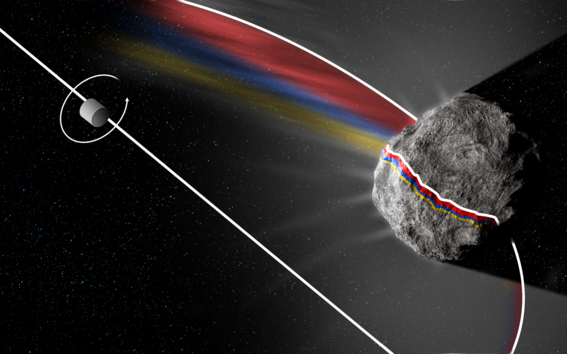The ESA Comet Interceptor enters mission analysis phase with significant Finnish contributions

A reservoir of comets exists on the outer reaches of our solar system, first postulated by Estonian astronomer, Ernst Öpik, in 1932. Öpik argued that if comets lose mass, as can be seen from their tails, then why are they still in existence billions of years after the formation of the Solar System?
Dutch astronomer, Jan Oort, added to the conversation in 1950 theorising that there must be a source of comets at a considerable distance from the Sun, at a low temperature. This reservoir has since been named the Öpik–Oort, or more famously, Oort cloud.
Due to gravitational perturbations by other stars orbiting the Milky Way galaxy, Öpik–Oort cloud objects sometimes break free and rush towards the sun. This rare astronomical occurrence provides an opportunity to observe an object that has remained frozen since the formation of the Solar System.
Compared with short-period comets (those with an orbital time of fewer than 200 years), dynamically-new ones are believed to contain a pristine surface material with very little volatile loss and weathering by the solar wind. The studying of such an object will give valuable insights into the conditions of the early solar system, but to do so will require a new kind of mission.
The Comet Interceptor is a unique mission for multiple reasons. It is the first Fast (F-class) mission which will hitch a ride with the ARIEL exoplanet telescope. The spacecraft will be parked at the L2 Lagrangian point which remains stationary behind the Earth as seen from the Sun.
From there, the Comet Interceptor will wait for a suitable target, with the help of observations from the Large Synoptic Survey Telescope and perform a rendezvous. As opposed to typical mission designs, Comet Interceptor is being developed without knowing the target properties like size, comet activity, flyby velocity and so on. Moreover, it consists of the main spacecraft A and two ‘sub-spacecraft’ B1 and B2, both of which will be released one day before the closest approach.
Postdoctoral researcher at Aalto University, Andris Slavinskis, says, ‘A fly-by of this nature is risky, and the probe may break so the images taken by the cameras are sent to spacecraft A first which then eventually transmits everything to the Earth. The computer will select and then download the images so the image analysis automation we have developed plays a crucial role’.
A great possibility to study an interstellar visitor
On October 29 in a payload selection meeting at ESA, it was confirmed that two instruments with Aalto’s contribution remain on board for the Phase 0 study. The Aalto School of Engineering is contributing with software development to the Optical Periscopic Imager for Comets (OPIC) and Entire Visible Sky (EnVisS) cameras, which will be carried by one of the sub spacecraft.
OPIC, developed together with the University of Tartu in Estonia, will observe the comet and provide a navigation function before the closest approach. EnVisS, developed together with University College London in the UK and Instituto de Astrofísica de Andalucía in Spain, among other partners, will observe the rest of the sky, especially the distribution of dust, neutral and ionised gas in the coma and tail.
VTT Technical Research Centre of Finland has developed a near-infrared spectral camera and a mid-infrared spectrometer for the Modular Infrared Molecules and Ices Sensor (MIRMIS) instrument, and will operate from the main spacecraft A. MIRMIS will take images of the comet at multiple wavelengths at near and thermal infrared, while also recording the mid-infrared spectrum of the comet. This data will provide valuable information on the chemical and mineralogical composition of the comet.
The early mission analysis Phase 0 will be concluded by the end of this year and hardware development will start in 2020. Instrument teams will deliver flight hardware in 2025, a short time by space mission standards, followed by the launch of ARIEL (with Comet Interceptor onboard) planned for 2028.
More information
Post doc researcher Andris Slavinskis
Aalto School of Electrical Engineering
andris.slavinskis@aalto.fi
Research Team Leader Antti Näsilä
VTT
Antti.Nasila@vtt.fi
Read more news

From award-winning food packaging to researching biodesign spaces
From an early age, Ena Naito was drawn to both the sciences and design. She found the perfect place to bring those two worlds together.
Architect and designer Talisa Dwiyani combines passion, materials, and collaboration in her work
Indonesia-born Talisa's takeaway from Aalto University is the cross-disciplinary way of working.
Giiguulen Enkhsaikhan: More sustainable textiles with hemicellulose
Aalto University's doctoral researcher's presentation of hemicellulose won the third prize in the Marcus Wallenberg Young Researchers’ Challenge event in November






